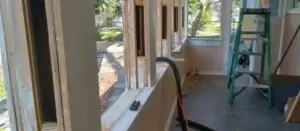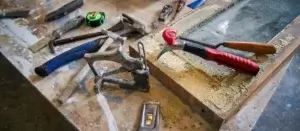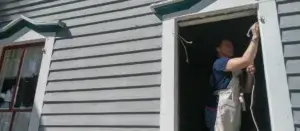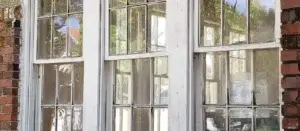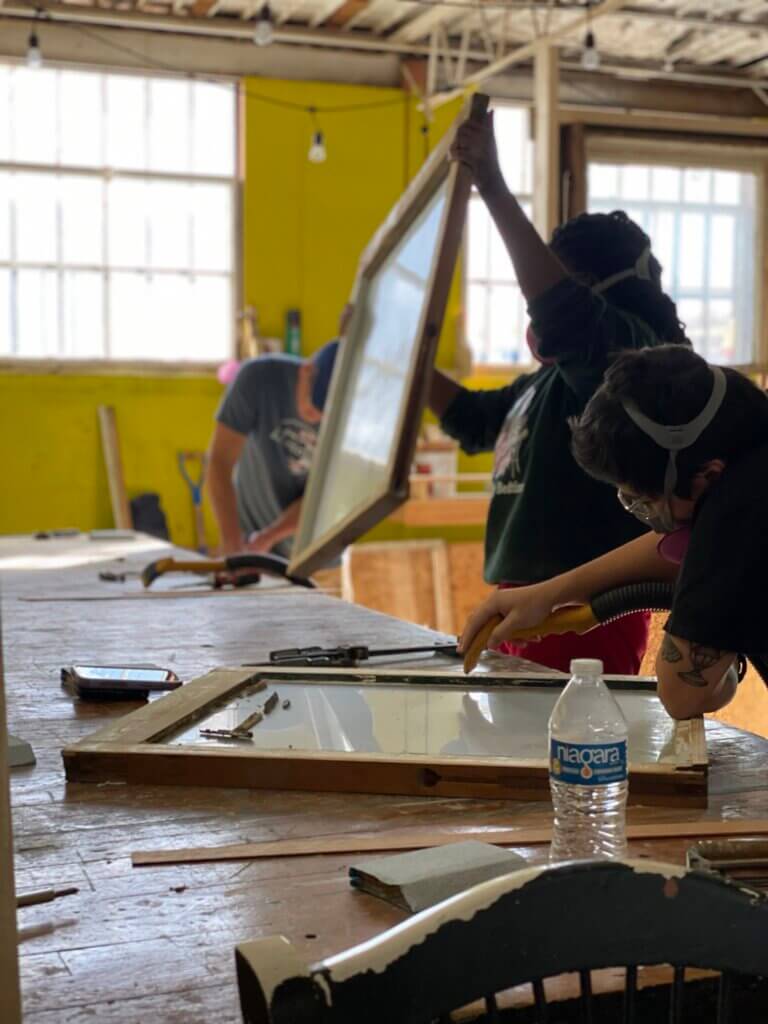
Why Study Window Craft in 2024?
Desperation.
With fewer people entering the trades, finding someone qualified to address common historic home issues is increasingly complicated. Historic wood windows, still a numbering in the millions, are serviced by a staggeringly small .000114% of the approximate 350 million people living in the United States. That statistic makes those who work in Window Craft – Unicorns.
What then is a steward of an historic home to do with such void of competent help? One could hunt for one of the statistically nonexistent unicorns, perhaps get lucky and get on a waiting list. This can be a discouraging path that makes it easy to throw one’s hands in the air.
The big corporate home stores or window replacement chains offer a solution – rip the original windows out and replace them with something cheap, inferior and designed to be replaced. After all, they make good arguments, AND statistically there’s nobody to refute them. But then again the first to plead his case SEEMS right, until another comes and examines him.
Those who are unwilling to succumb to the replacement window cycle of changing them out every 15 years, or wait for the magic unicorn to show up might opt to take our Total Window Makeover course and learn to do it themselves.
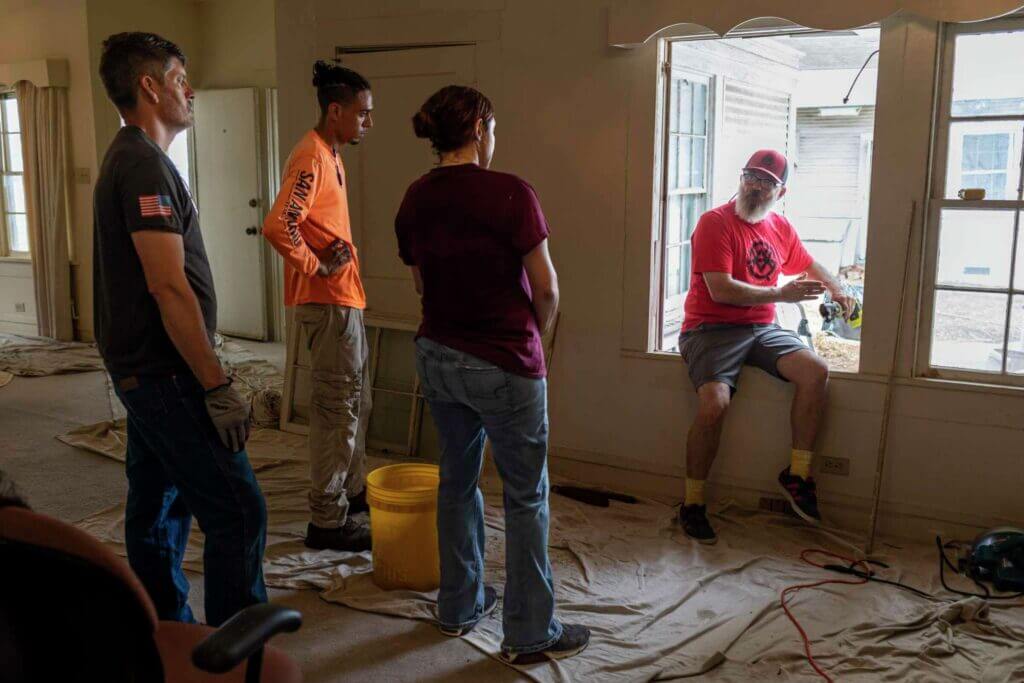
So why study Window Craft in 2024? Some stewards in the historic home community will study it because they love their home. They are unwilling to compromise and join the replacement craze. Someone has to do the work. They might as well do it themselves.
Opportunity
The desperation facing the historic house communities at large highlights something else that those interested in a trade of any sort should take notice of. Opportunity.
In San Antonio, Texas is a historic house neighborhood known as Dignowity Hill that spreads out over sixty six blocks. Each block has about twenty houses. 66 x 20 = 1320. Call it 1000 houses for easy math. If those 1000 houses average twenty windows per house, the neighborhood has 20,000 serviceable historic wood windows that statistically, nobody currently pays attention to (except do it yourselfers and big box chain stores).
Dignowity Hill is just one of more than 16 designated historic neighborhoods in San Antonio. Another neighborhood I’ve done the math on is one called Old Northeast in St. Petersburg, Florida with over 3000 of these 1920s era houses and more than 60,000 windows.
Twenty years ago when I first started investigating these numbers, I found out that the Tampa Bay are has over 80,000 historic buildings with historic wood windows – 1.2 million of them just in one region of Florida that nobody is servicing.
Why study Window Craft in 2024? The team who commits to mastering the window craft trade will gain legitimate access to those 20,000 windows, and the historic house community at large.
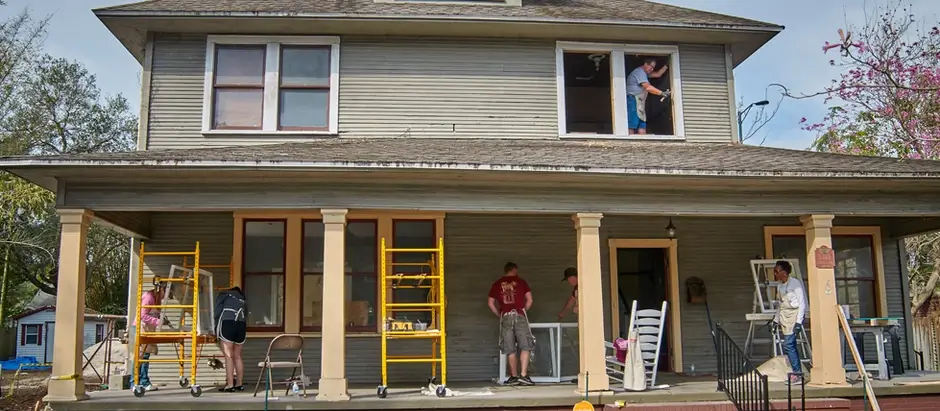
Abundance
To master a trade, a person needs practice in abundance. The historic wood windows encapsulated within the historic house communities across the United States provide all the opportunity anyone needs to reinforce the carpentry, joinery and finishing lessons contained in the window. The supply is as abundant as was the ancient forests we cut down to make them. It’s seemingly never ending.
The 1920s saw the pinnacle of the building industry and the window that builders used in neighborhoods like Dignowity Hill, Old Northeast and similar neighborhoods across the entire nation was the historic double hung.
The historic double hung was simple and effective because all the design flaws had been worked out in centuries prior. It was so universal that it was the window of choice whether the house was a simple shotgun bungalow, a Victorian mansion or any style house in between. It could be used simply or embellished upon endlessly and either way, its intention was to last perpetually, as long as the house itself. If the house is still standing, the original builders intended that the original windows remain a part of the house.
Historic House Communities like Dignowity Hill and Old Northeast are in every city or town in the United States. One neighborhood with a thousand houses could provide a team of three people a lifetime of honorable, needed and respected work.
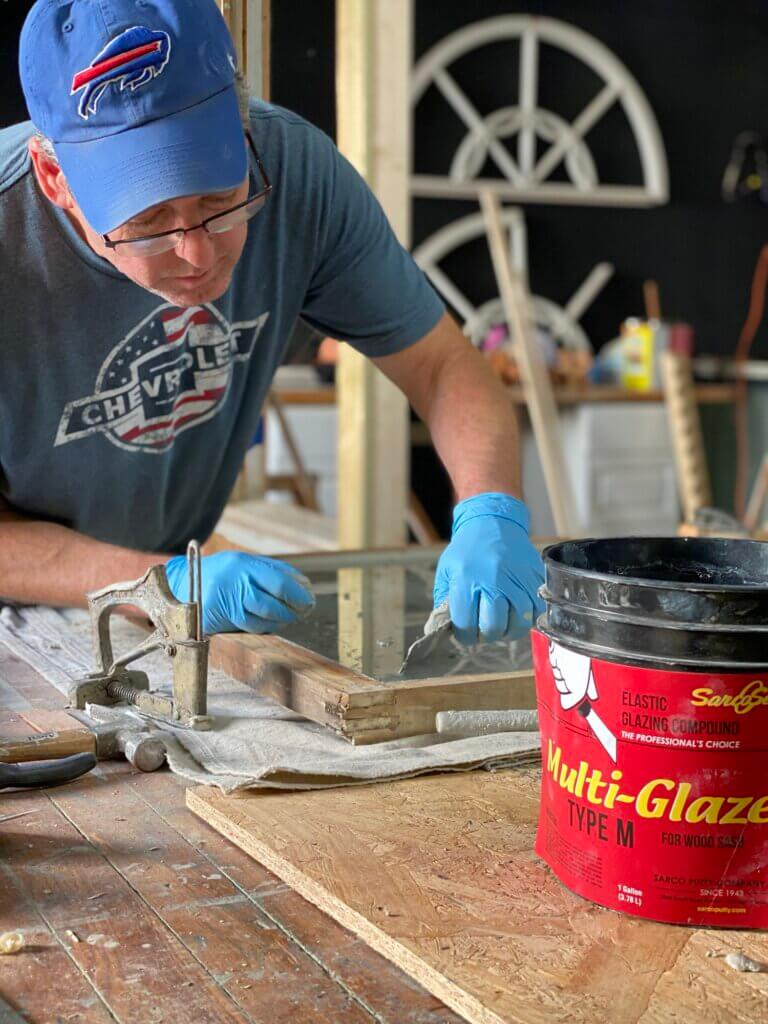
Access
The financial barrier of entry into the world of Window Craft is remarkably small. A committed person could begin their study and practice with a tool set up for around $100.
Obviously more can be spent, but the money to buy tools can be extracted from the money earned from Window Craft.
Truthfully there are so many people who need this that there are probably those out there who would sponsor a person to take the Total Window Makeover course just so they could be hired to restore the windows on said sponsor’s house.
Transferable
Window Craft is an optimal blend of carpentry, joinery and finishes and as such, a person who masters the art and science of the historic wood window, by default masters most of the skills required to service the other major elements of the historic house.
Carpentry, being the manipulation of wood and wood assemblies made by a joiner into something useful – Window Craft contains the epitome of high end carpentry. Whether assembling a window from scratch, taking the window apart and putting it back together, repairing the frame, replacing ropes, tuning and adjusting hardware to make the window function as it ought – is all carpentry skill that transfers to other innumerable old house elements.
Joinery is the making of goods that the carpenter then manipulates into service, like the sash. A person who masters the window sash simultaneously masters the skills needed to make the rest of the items that go into making an old house what it is – doors, cabinets, frames, paneling and countless other items that a carpenter can use.
Finishing is the art of protecting and polishing the completed work of the carpenter and the jointer. it’s not merely “painting” as some might think. It’s the critical final step that applies to every other element of the house as well.
A person who studies and masters Window Craft therefore engages in mastering skills that transfer to every other part of the historic house.
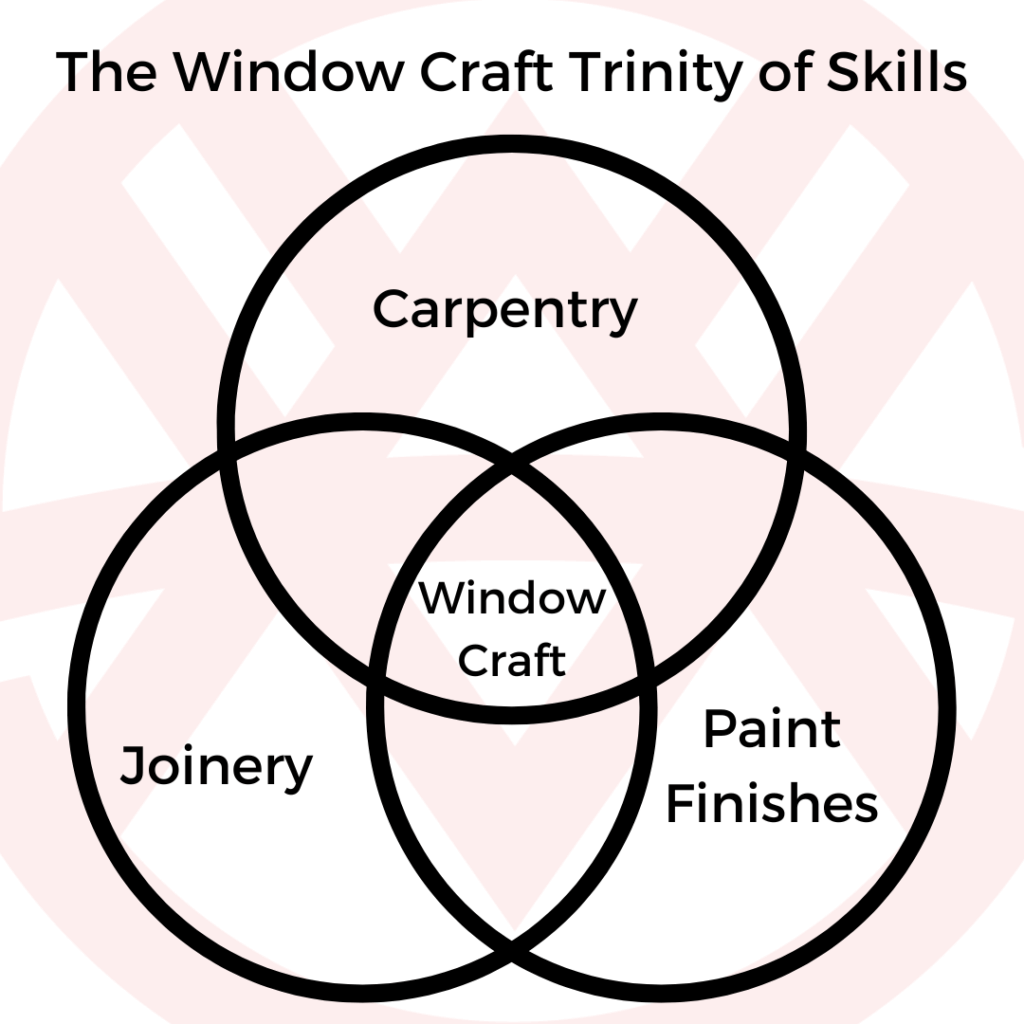
These are just a few of the many reasons to study Window Craft in 2024. Whether a person is a homeowner who can’t find someone to perform the work for them or that person desires to learn a trade that will serve them with a lifetime of meaningful work that people will pay for, Window Craft is worth studying and has many intrinsic rewards.
